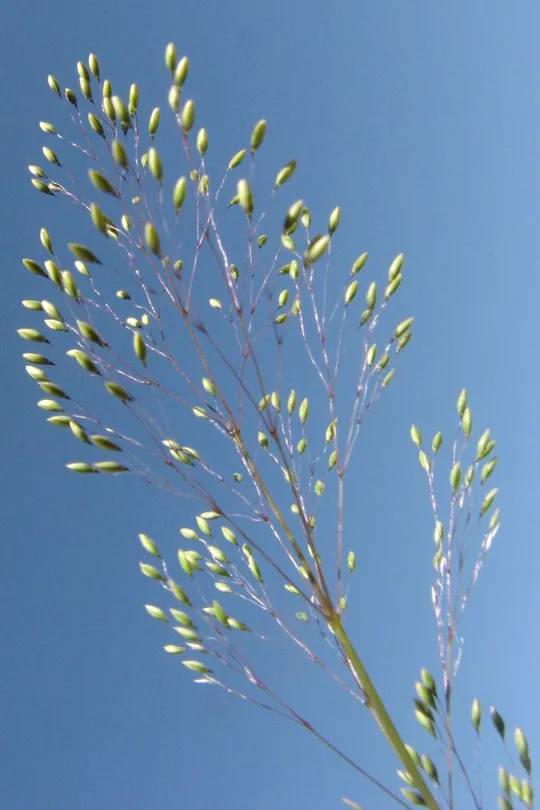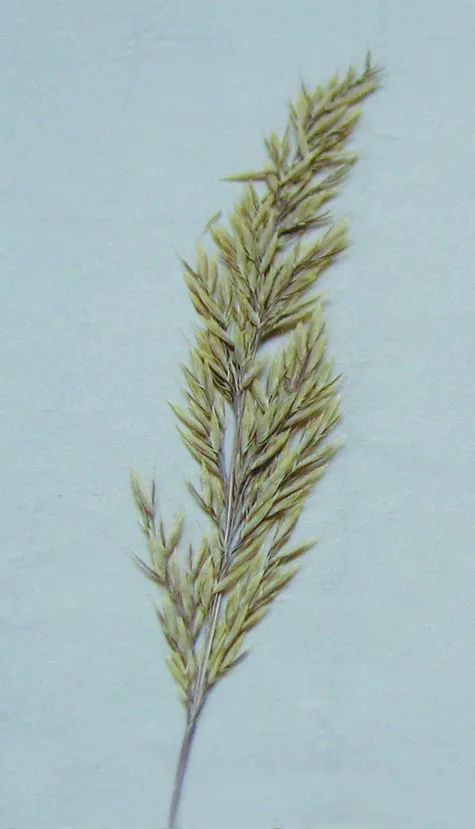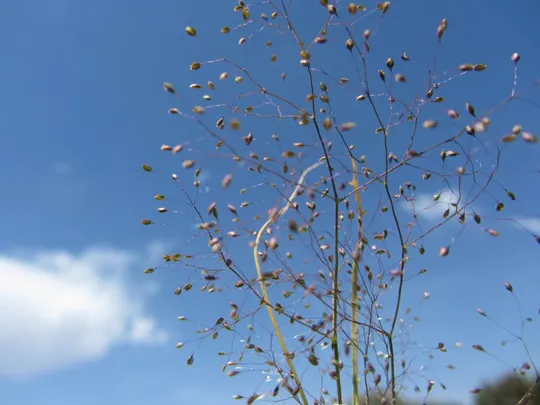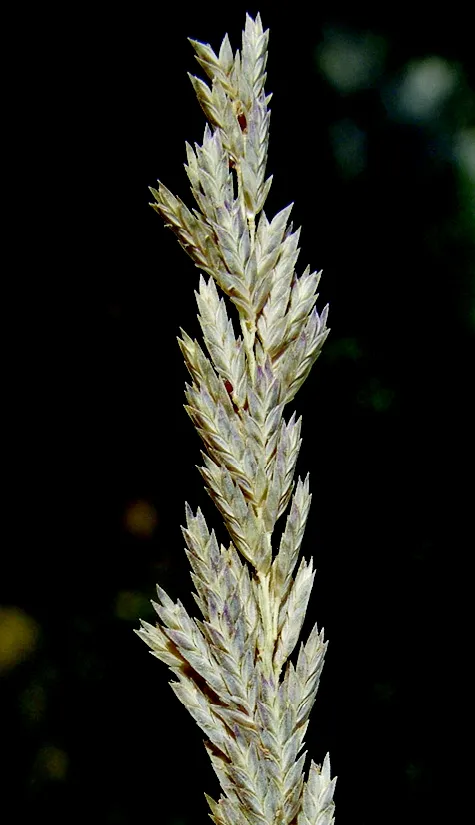Zingeria biebersteiniana

Zingeria biebersteiniana is found in the
lower Hermon and in the Upper Galilee, at a total of three sites. On the lower
Hermon it grows at two sites on Mount Keta. In the Upper Galilee it was found
as a new plant on the Dalton Heights in 2006. Z. biebersteiniana
is relatively common in the High Hermon dolines at altitudes of 1300-2100
meters (outside the scope of this book), where puddles are formed following the
spring thaw. The species was also reported from the Golan Heights, but the
observations were in fact of Antinoria insularis and Aira
elegantissima, which are extremely similar to Z. biebersteiniana.
Zingeria biebersteiniana grows at the edge of a seasonal pool on clayish basalt soil on the Dalton
Heights. At the foot of Mount Hermon it is found on sandstone slopes rich in
clay horizons bearing seasonal water, in a Sarcopoterium spinosum and Levandula
stoechas Mediterranean scrubland. On the High Hermon it dominates on clay
soil patches at the bottom of dolines.
Zingeria
is an annual grass genus that has three species growing in southeast Europe,
the Middle East and eastwards to the Caucasus and Iran. Its distribution center
is in southern and eastern Turkey, where the three species are found. Zingeria
is very close to the genus Milium but differs from it by its hairy pale
that has clavate hairs. The pedicels of Zingeria are only 3-4.5 mm long,
while those of the Milium species are much longer. The two genera are
similar in appearance and in their small spikelets with filiform pedicels, to
the genera Antinoria, Aira and Holcus, but the latter have
two florets on the spikelet and not just one. Also, Aira and Holcus
spikelets have awns. The secondary branchlets in Zingeria are
perpendicular to the main stem and in the Aira they are more upright. In
the Golan Heights Antinoria insularis replaces Zingeria in a very
similar habitat (drying seasonal puddles); this species is very similar to Z. biebersteiniana
but its spikelets contain two florets and even when one of them falls, the
remaining floret is not located in center of the spikelet.
·
The number of Zingeria
biebersteiniana sites, reports and observations is too
small to enable the assessment of change trends regarding the number of regions
and sites. The populations in Israel are probably marginal populations of a broader
geographical distribution in wetland habitats in montane areas north of Israel.
·
The prolonged desiccation
of the wetlands in which Z. biebersteiniana grows and
agricultural development of the sandstone areas on Mount Keta threaten the
populations.
·
The Mount Keta sites
are in the Mount Hermon Nature Reserve.
·
Z.
biebersteiniana is found in the countries northeast of Israel and does
not appear in their red plants lists.
The status of
the area in the Dalton Plateau, which is now "proposed" as a nature
reserve should be changed to “declared”. Zingeria biebersteiniana
plants should be monitored at their growth sites.
The species should
be propagated from seed in refuge gardens, so that they can be reintroduced to
nature in the case of extinction, and to populate additional seasonal pools on
the Galilee Mountains, the northern Golan Heights and the lower Hermon.
Zingeria biebersteiniana is found in the
montane areas of the Middle East and northern Israel, Syria, Lebanon, Turkey
(Central Anatolia and to the south), northern Iraq (very rare), northwestern
Iran and Trans-Caucasus to Siberia.
Zingeria biebersteiniana is a small,
delicate annual grass that grows in habitats adjacent to water. It is extremely
rare and is found in the Upper Galilee and at the foot of Mount Hermon in
peripheral populations relative to its global distribution – montane areas
north and east of Israel.
Current Occupancy Map
| 1000 squre meter pixel | 5000 squre meter pixel | 10000 squre meter pixel | |
|---|---|---|---|
| number of observations | 0 | 0 | 0 |
| in total pixels | 0 | 0 | 0 |
| Family | Gramineae |
| Classification | On the endangered species list |
| Ecosystem | Mediterranean humid |
| Chorotype | Western Irano-Turanian |
| Conservation Site | Dalton Heights |
| Rarity |
1
4
6
|
|---|---|
| Vulnerability |
0
2
4
|
| Attractiveness |
0
0
4
|
| Endemism |
0
0
4
|
| Red number |
1
3.7
10
|
| Peripherality | N |
| IUCN category | DD EW EX LC CR EN VU NT |
| Threat Definition according to the red book | Vulnerable |
 Based on:
Based on:






